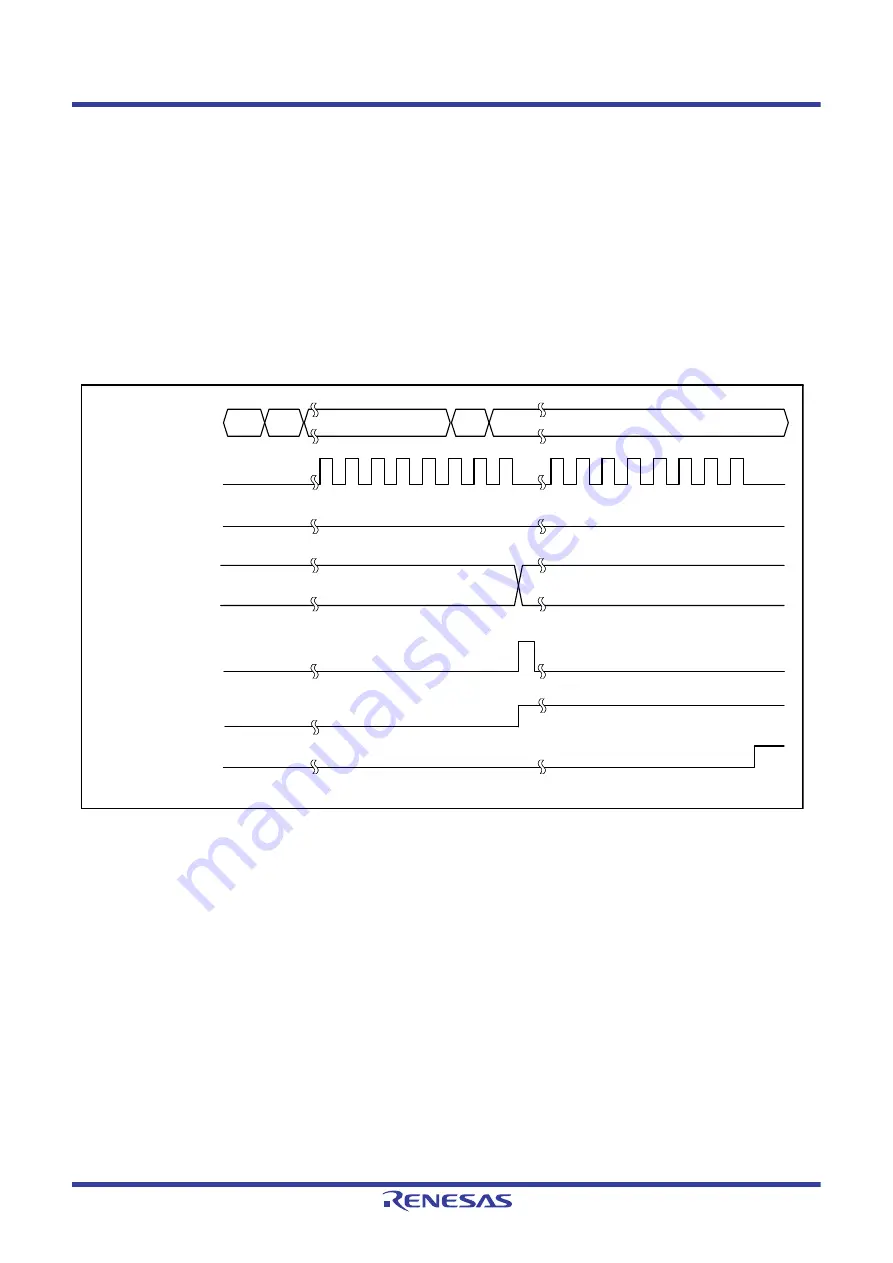
R01UH0823EJ0100 Rev.1.00
Page 1377 of 1823
Jul 31, 2019
RX23W Group
38. Serial Peripheral Interface (RSPIa)
38.3.6
Communications Operating Mode
Full-duplex synchronous serial communications or transmit operations only can be selected by the communications
operating mode select bit (SPCR.TXMD). The SPDR access shown in
and
condition of access to the SPDR register, where W denotes a write cycle.
38.3.6.1
Full-Duplex Synchronous Serial Communications (SPCR.TXMD = 0)
shows an example of operation when the communications operating mode select bit (SPCR.TXMD) is set
to 0. In the example in
, the RSPI performs an 8-bit serial transfer in which the SPDCR.SPFC[1:0] bits are
00b, the SPCMDm.CPHA bit is 1, and the SPCMDm.CPOL bit is 0. The numbers given under the RSPCKA waveform
represent the number of RSPCK cycles (i.e., the number of transferred bits).
Figure 38.24
Operation Example of SPCR.TXMD = 0
The operation of the flags at timings shown in steps (1) and (2) in the figure is described below.
(1) When a serial transfer ends with the receive buffer of SPDR empty, the RSPI generates a receive buffer full interrupt
request (SPRI) (sets the SPSR.SPRF flag to 1) and copies the received data in the shift register to the receive buffer.
(2) When a serial transfer ends with the receive buffer of SPDR holding data that was received in the previous serial
transfer, the RSPI sets the SPSR.OVRF flag to 1 and discards the received data in the shift register.
When full-duplex synchronous serial communications (SPCR.TXMD = 0) is selected, reception occurs simultaneously
with transmit operations. As such, the SPRF and OVRF flags in the SPSR register become 1 at the timing described in
(1) and (2), respectively, according to the state of the receive buffer.
W
W
SPDR access
OVRF
SPRI
8
7
6
5
4
3
2
1
8
7
6
5
4
3
2
1
(1)
(2)
TXMD
(TXMD = 0)
Empty
Full
Receive buffer status
SPRF
(CPHA = 1, CPOL = 0)
RSPCKA















































